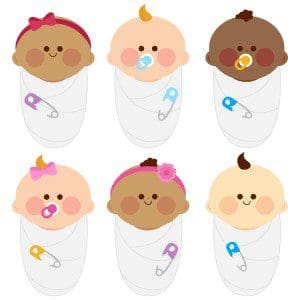FSAs, Status Changes, and Contributions

Here’s another of my famous jokes for you. Change is inevitable – except from vending machines. HA! 🙂
One of the possibly inevitable changes you may be facing in your own life is in your family status. As you know, such changes can affect your health insurance eligibility. But they can also affect your healthcare accounts, like Flexible Spending Accounts (FSAs). So let’s look at FSAs, status changes, and contributions.
Types of FSAs
First, let me point out that there are two types of FSAs. Healthcare FSA funds can pay for eligible health and wellness products and services. Dependent Care FSA funds pay for certain types of dependent care while the employee is working.
Can I change my health FSA contributions?
You may be offered an FSA account during open enrollment. If you choose to enroll, you will select a contribution amount up to the IRS-mandated maximum limit. If your family status changes during the year, you may want to increase or decrease the amount you are contributing to your FSA for that plan year. You may change contributions only IF your employer’s plan allows it AND the change is for an eligible reason as defined by the IRS. Other changes may not be permitted at all, regardless of the plan.
Increasing FSA Contributions
FSA participants have the same annual contribution limit regardless of family status. If a single person has already elected the maximum, they won’t be able to increase their contribution if they get married, have a child, or adopt. But if you are contributing less than the maximum, your plan may let you contribute more in response to your growing family.
What happens if your healthcare expenses are much higher than initially thought, and you want to increase the contributions? That is not a qualified reason for a mid-year change. Instead, you’ll have to wait until the next plan year to increase your annual contribution.
Decreasing FSA Contributions
You might want to decrease contributions if your marriage ends or some other family member no longer qualifies as a tax dependent. Your FSA plan may or may not allow a decrease under those circumstances. Check your Summary Plan Description (SPD) or with your benefits representative to determine if your plan allows it.
What about Dependent Care FSAs?
Dependent Care FSAs (DCFSAs) provide parents with tax savings on dependent care costs for dependents who cannot care for themselves. Like health FSAs, dependent care FSAs have limits, but they work differently. Single people and married couples who file taxes jointly may contribute up to $7,500 each year. However, married parents who file taxes separately may only contribute $3,750 each. Enrollment in a dependent care FSA may be allowed mid-year by your plan in response to birth, adoption, a change in need for paid childcare or elder care, or similar situations.
Increasing Dependent Care FSA Contributions
You may be able to increase your contributions under certain circumstances if you are not already contributing the maximum. For example, let’s say you use a home-based daycare and pay $3,600 yearly for childcare. But the caregiver decides to retire and close down, and the only suitable replacement you can find is a childcare center that charges $4,800 a year. As a result, your plan may allow you to increase your annual contribution to $4,800.
Again, check with your HR or benefits administrator about your ability to change contributions in response to changes in family status or circumstances. Also, remember that children are only eligible for dependent care coverage until their 13th birthday. Once a child reaches 13, regardless of when that occurs during the plan year, no further care expenses for that child are eligible for reimbursement.
My joke about inevitable change may not have been that funny, but I hope I’ve helped you with other inevitable changes through this article. And if you enjoyed this, be sure to check out all my other helpful blogs!
